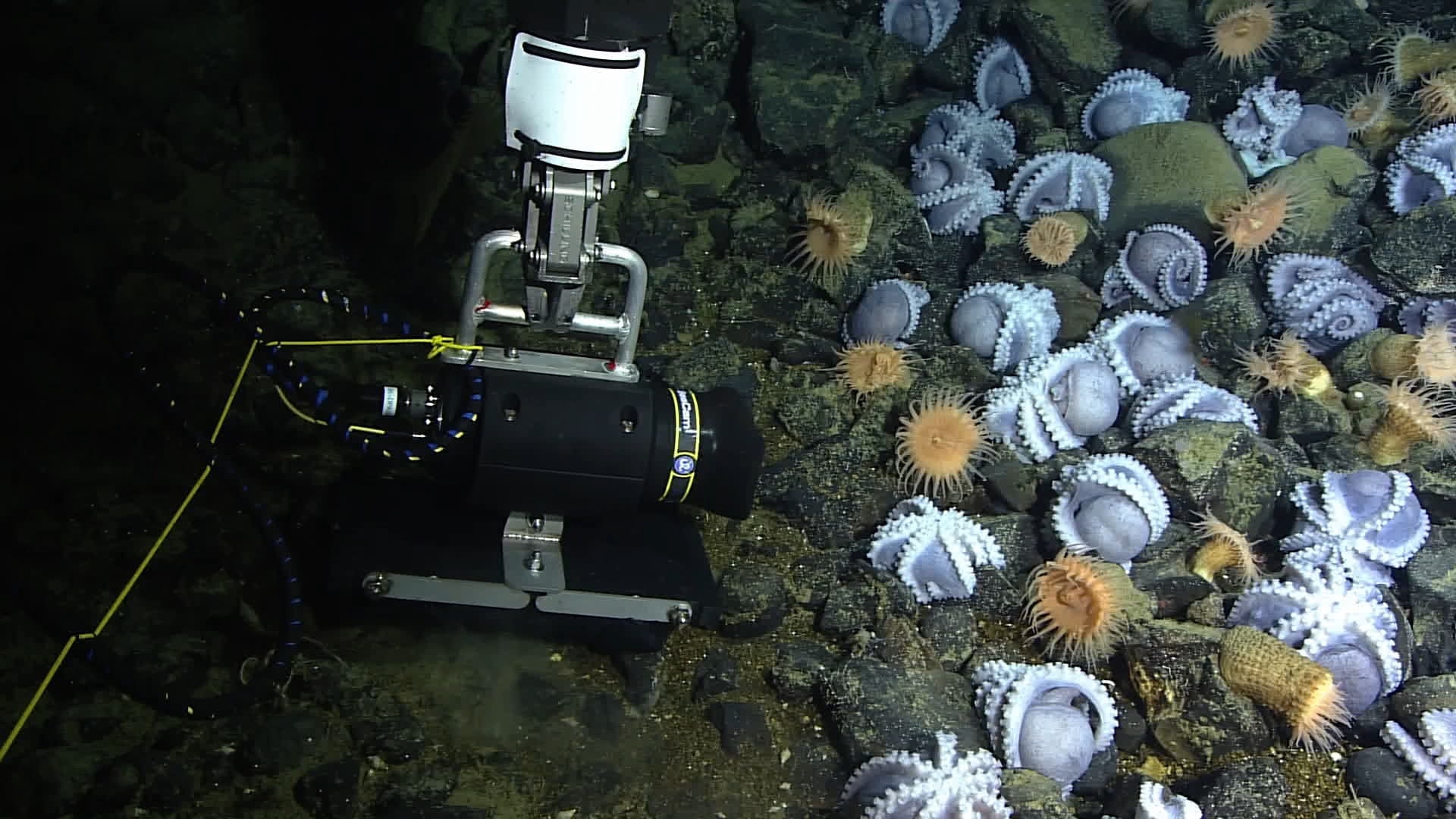BBC Earth newsletter
BBC Earth delivered direct to your inbox
Sign up to receive news, updates and exclusives from BBC Earth and related content from BBC Studios by email.
Planet Earth III
Multi-award-winning producer and director Will Ridgeon explains how Planet Earth III brought the discovery of a mysterious deep-sea octopus nesting ground to our screens.
I have always been fascinated by the deep-sea – it really is the last truly unexplored part of our planet."
I often watch live videos streamed from deep-sea expeditions and it was while watching one such expedition that I first saw the incredible octopus garden on a deep seamount in the Pacific Ocean. I couldn’t believe what I was seeing – the lights of the ROV (remotely operated vehicle) revealing countless deep-sea octopus lying upside down in rows along the ocean floor. Octopus are usually thought of as solitary creatures and yet here they’d found thousands – perhaps 20,000 or more! All female and all brooding their eggs. We immediately knew we had to include the sequence in Planet Earth III.
But what were these octopus doing, and why were they present in such large numbers?
Luckily for us, the oceanographic research centre MBARI had embarked on a project to find out more. Led by deep-sea ecologist Jim Barry, the study gave us a unique opportunity to collaborate and spend an unprecedented amount of time filming in this remarkable location. It would take multiple week-long trips over a two-year period to capture the footage we needed.
After months of planning, I was preparing to fly out to join the first expedition when the Covid-19 pandemic struck. The boat was able to sail with a skeleton crew, but I was left to direct the filming from 5,000 miles away in my Bristol home. It was strange to be working with the team and seeing images of the octopus from so far away. The footage was encouraging, but it was clear that lots more work would be needed.
Working with MBARI, we developed a camera system that allowed the ROV’s two robotic arms to position a small remote camera among the nesting octopus mothers. This unique set up allowed us to capture the most intimate, close-up shots that have ever been seen of these extraordinary creatures...
By the time of the second expedition, travel restrictions had eased a little and I was able to join the team on location. The ROV, known as Doc Ricketts, is about the size of truck and has to be launched through a ship's moon pool (a ‘James Bond’-style trap door in the base of the ship). After a 90-minute descent, the ROV reached the ocean floor and I got my first real chance to film in this amazing place. Working from a control room on the ship, the ROV’s pilots manoeuvred the enormous vessel around the brooding mothers and used its robotic arms to move the camera into position. I was then able to control the camera using a PlayStation controller!
Uncovering such close and intimate pictures gave us all a much deeper understanding of the struggle these devoted mothers go through"
It takes a huge amount of time and patience to film in the deep sea - it is dark, freezing cold and under immense pressure (300 times the pressure at the ocean’s surface). Even simple tasks such as moving a camera to one side can take a huge amount of time, as the pilots had to control the ROV’s robotic arms remotely from two miles above its location. It was certainly worth the effort, though, and the images we captured were jaw-dropping.
At one point, an octopus mother shifted slightly, revealing her precious eggs, and we were able to see the developing embryos inside. Uncovering such intimate pictures gave us a much deeper understanding of the struggle these devoted mothers go through to protect and nurture their brood, an effort that would eventually lead to the end of their own life. It was very moving to witness.
Perhaps most fascinating, though, were the discoveries made during the two years by Jim and his team. “After spending so much time at sea studying these octopus moms and even more time reviewing video, I feel I’ve begun to understand the mothers’ struggle to protect the developing brood as they march toward the end of their own life,” says Jim. “For me, they became individuals, even friends.”
By the time we’d finished filming, Jim was ready to publish his ground-breaking paper, explaining in detail how these “octomums” gather around the inactive deep-sea volcano, using the warm waters escaping from cracks in the ocean floor to help raise their brood. In the near-freezing waters of the deep sea, this process could take up to 10 years. However, here, bathed in the waters of the hydrothermal spring, it happened much more quickly. Even so, Jim and his team discovered that it still took the eggs nearly two years to hatch, and in that time the mothers never left their eggs – not even to feed.
It is thanks to Jim and his MBARI team that we now know so much about this unbelievable place and are able, for the first time, to show the life of these “octomums” in one of the world’s most hostile environments.
Narrated by Sir David Attenborough, #PlanetEarth3 uncovers our world's extraordinary ever-changing habitats like never before. Find out where you can watch the series here.




